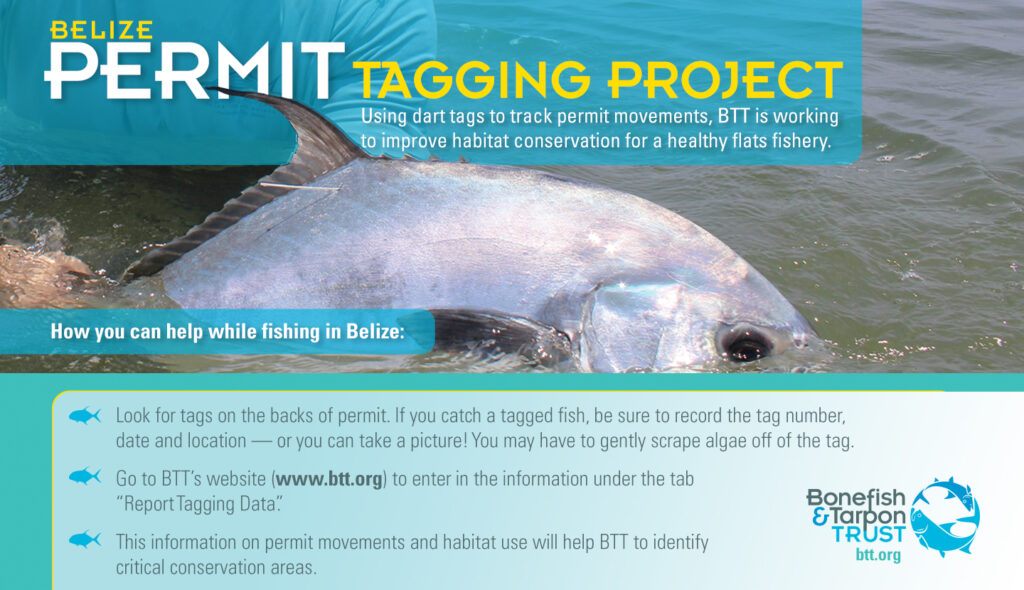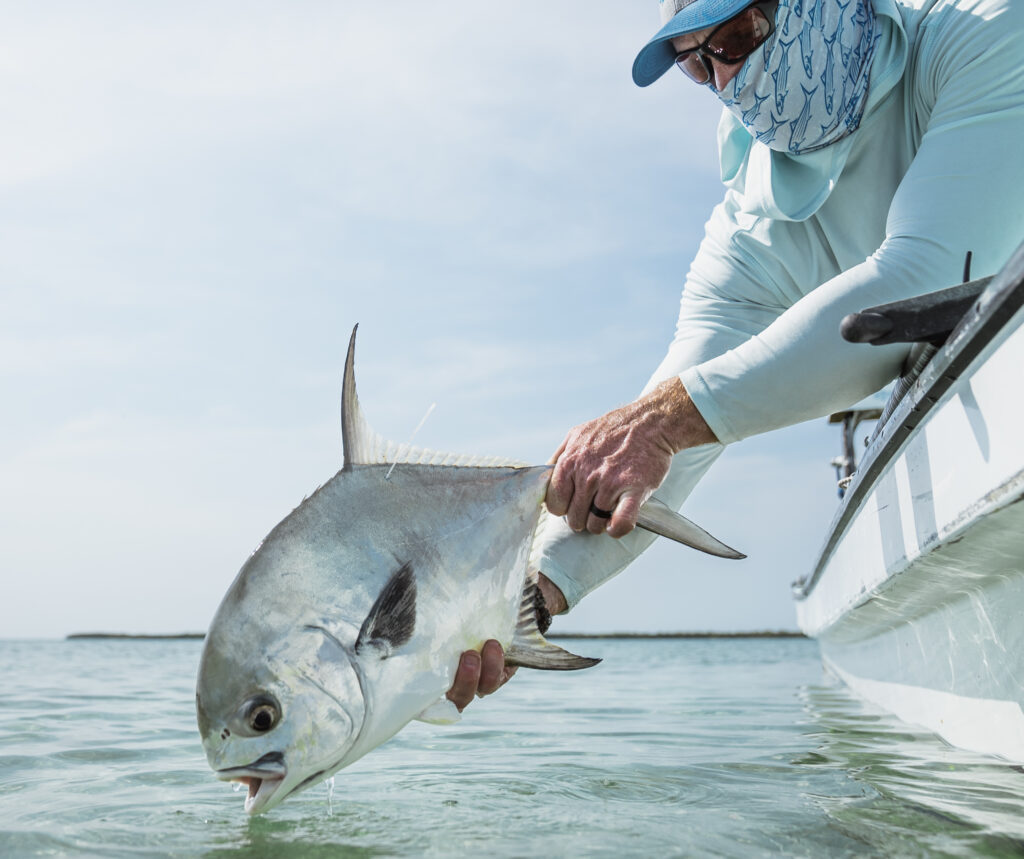An angler releases a tagged permit in Belize. Photo: Silverline Films
Bonefish, tarpon, and permit need an array of healthy coastal habitats to survive. When habitats are destroyed or degraded, the flats fishery suffers. The habitats essential to our flats species aren’t just where we fish for them, but also include habitats for juveniles, adults migrating to spawn, spawning locations, and feeding and resting areas away from the flats. Unfortunately, some of this habitat information is missing for all three species. This is why BTT continues to work with guides and anglers to tag and track bonefish, tarpon, and permit—we can only restore and conserve the habitats we know about.
A focus in northern Belize is understanding permit movement patterns so we can identify the places most important for protection, and determine the effectiveness of protected areas like Hol Chan Marine Reserve. Since 2021 BTT has worked with anglers and guides in northern Belize to tag 138 permit. Fish were tagged on the Caribbean and Chetumal Bay sides of Ambergris Cay. Nine tagged permit were recaptured four months later at the same spot where they were tagged. Two other permit had moved from the area they were tagged—one permit was recaptured one mile away from the tagging location, the other was eight miles away. Though preliminary, this data shows that permit have complex movement and habitat use patterns that will require a regional conservation strategy.
Threats to permit include dredging of the flats and coastal development, which degrades habitats, and beach fish traps, which catch permit during their migrations. Although many of the permit captured in beach traps are released, the traps disrupt migrations and cause stress to the captured permit.
As the tagging project continues and expands, the data will help BTT to identify important permit habitats and migration pathways. We also plan to expand the tagging program to include acoustic tracking, which will help us to identify spawning sites on the nearby reef.
Please help BTT by tagging the permit you catch in Belize and reporting any tagged permit that you land. The information is essential for conserving the fishery. To participate, follow the steps below.





